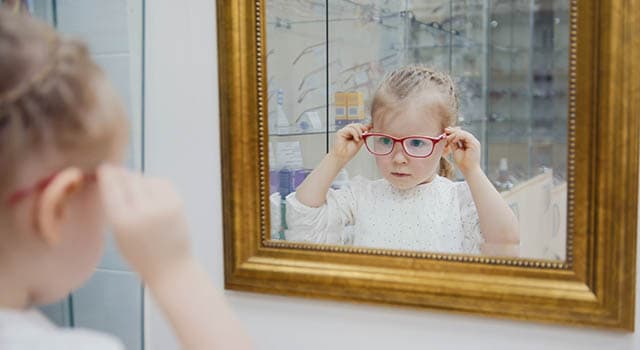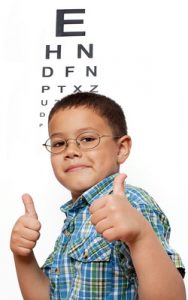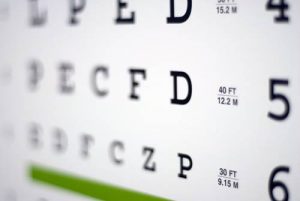Why did your eye doctor prescribe ‘low plus’ lenses for your child?
Low plus lenses, like their name suggests, have relatively low lens powers usually +0.50, +0.75 or +1.00. These powers are considered ‘low’, because typically, most plus lenses are a much higher prescription (+1.25 to +4.00) . Higher plus lenses are usually needed for correction of hyperopia and adult reading glasses.
Most of the children that are prescribed low plus lenses, have clear distance and visual acuity of 20/20, without glasses or contact lenses. Therefore, an optical prescription for clear vision is not needed.
You are probably wondering now— what do these low plus lenses actually accomplish?
Low plus lenses have become a vital part of treatment plans provided by eye doctors, to support children with focusing problems, learning difficulties, attention issues, lazy eye and special needs.
Low plus lenses can be worn in the classroom, while a child is reading, completing assignments or exams, or using a computer. Your eye doctor will advise when these supporting glasses are required to be used.
Two main reasons why low plus lenses are prescribed
Optometrists that provide pediatric care and vision therapy will typically prescribe low plus or anti-stress lenses more often than ophthalmologists.
These are most common reasons for an eye doctor to recommend low plus lenses:
- Farsightedness. Although many farsighted children can see clearly without glasses, their eyes are forced to work harder to obtain clear vision— often leading to fatigue. Low plus lenses provide the child with clear and comfortable vision, and reduce the amount of effort needed to maintain clear vision.
- Focusing support. If a child has focusing difficulties then low plus lenses will provide support for this visual skill— reducing the stress on the eyes for reading, and all other near vision tasks required for school. These low plus lenses will allow the child to achieve clear and comfortable vision for reading, computer use or other near vision activities.
Low plus lenses can be prescribed either as a single vision lens, where the lens contains a single power for either distance or near vision, or as a multifocal, where the lens contains various powers for both distance and near vision.
Contact an eye doctor near you if you still have questions about your child’s low plus lenses.
SEE RELATED: Accommodative Dysfunction
Support lenses
Low plus lenses are often referred to as ‘support’ or ‘stress-relieving’ lenses, as they act to reduce the amount of effort exerted by the child by supporting their focusing skills.
Quite often, low plus lenses are prescribed in combination with other optical corrections that act to further reduce the stress on the visual system— these include yoked prism or base in or base out prisms. These are specific optical corrections prescribed by eye doctors to support the visual system of children. With these specialized lenses, strain on a child’s visual system is reduced, enabling reading to become more relaxed, with increased fluency, speed, intonation, and comprehension.
Vision therapy
It is important to note that for many children, low plus lenses may not be effective alone, and a program of vision therapy will facilitate increased positive results.
Moreover, a vision therapy program may be beneficial for most children who wear low plus lenses, as it helps to fully develop and improve the visual skills— providing these children with the necessary tools to achieve their potential.
Schedule an appointment with a vision therapy eye doctor to help your child improve their visual skills.
Low plus lenses and reading efficiency
Recent research investigated the effects of wearing low plus lenses while reading. The study concluded the following:
- Low plus lenses had a significant positive effect on reading comprehension for all subjects.
- Reading speed improved when subjects wore low plus lenses.
Low plus lenses can be a powerful support for children— research is now showing the important role these lenses play in assisting children with visual problems to improve their academic achievements.
LEARN MORE: Vision for School
Contact a vision therapy eye doctor to evaluate and treat your child’s vision so that they can improve their visual skills.










